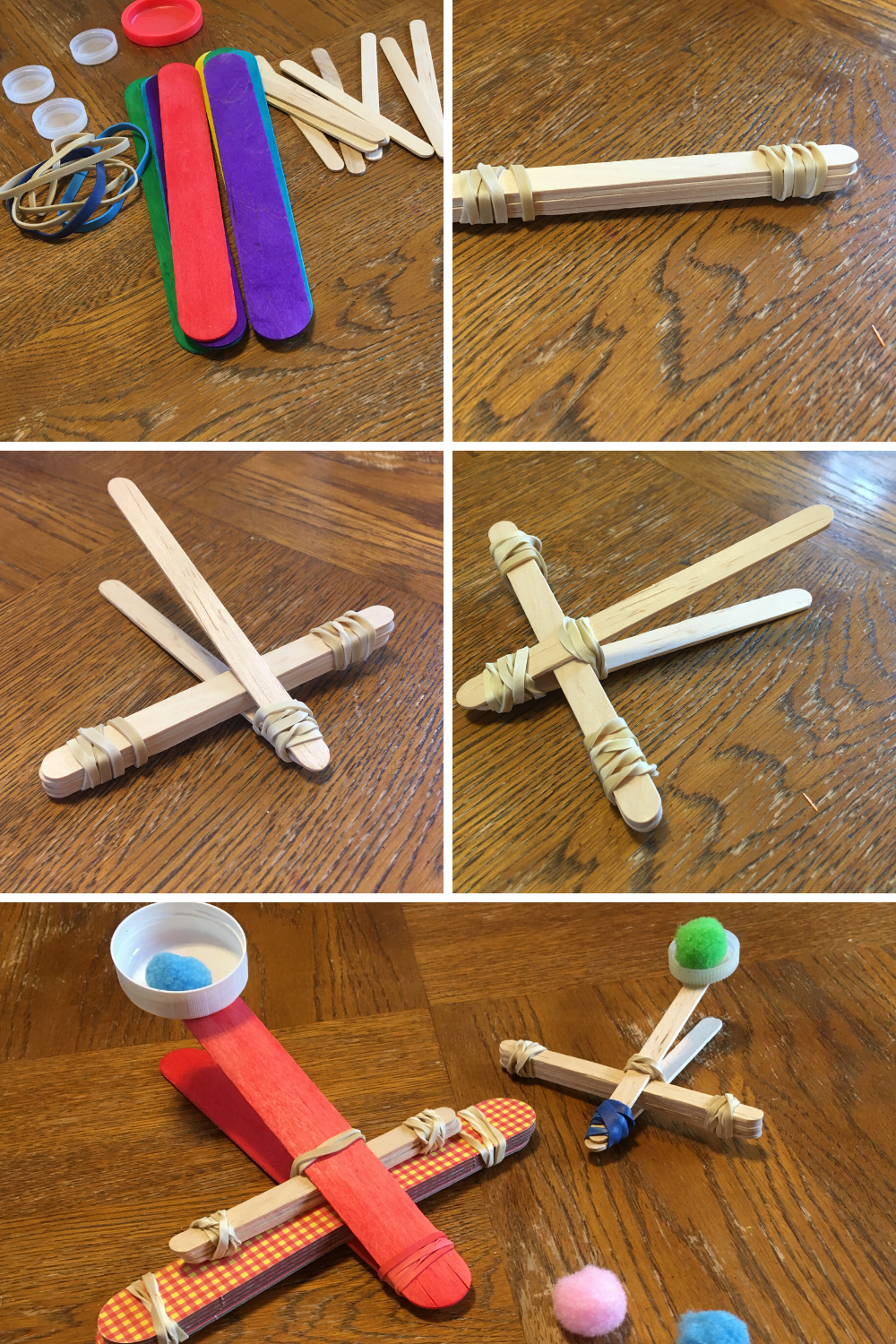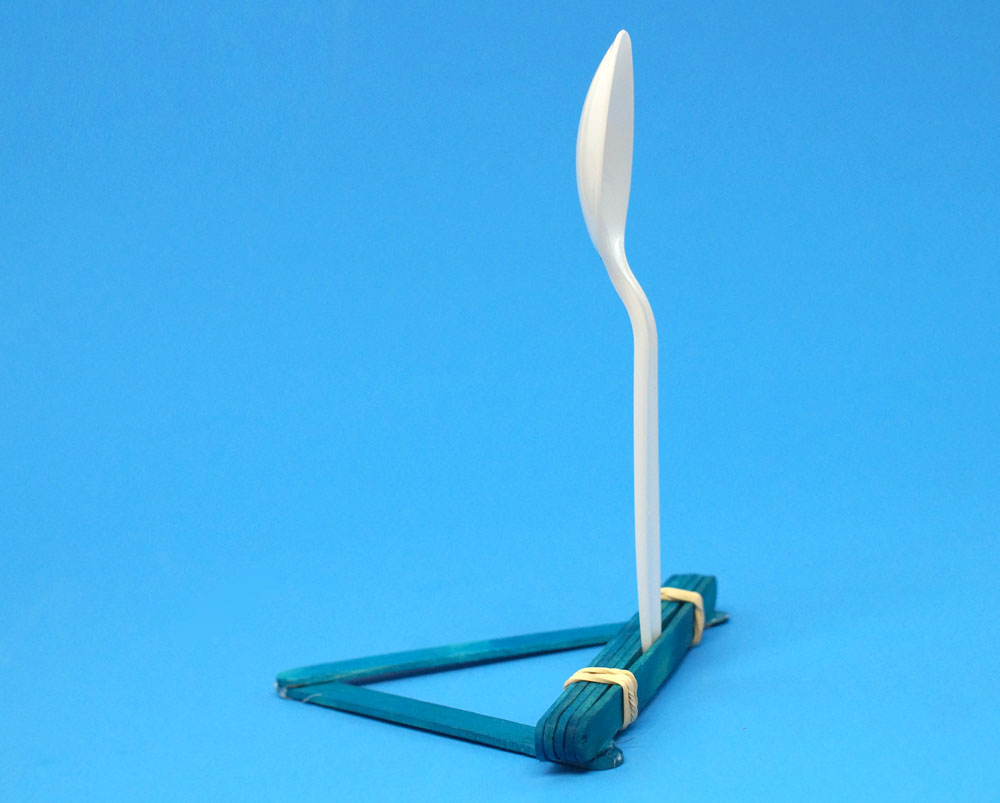

To learn more about Caerphilly Castle, click here.

Caerphilly Castle was built in the thirteenth century. They tested the defensive walls by building catapults with popsicle sticks, rubber bands and spoons and firing mini marshmallows at their creations to see how many could land inside. Shull Middle School, Perth Amboy NJ 2017 After watching the video of David Macaulay's Castle, my students designed their own fortresses. Gravity pulls the heart back toward the ground, giving the candy its trajectory, or path.Some innovative castle designs by my middle school students, Samuel E. When the arm stops, the heart projectile continues to move forward due to Newton’s first law, which states that an object in motion, stays in motion. When you place an object like the conversation heart in the bucket, the heart moves at the same speed as the arm and the bucket. When you release the arm of the catapult, the elastic energy is converts into kinetic energy – the energy of motion. Therefore, tension builds and energy is stored.Įnergy that is stored when a material is compressed (think of a spring) or stretched (a slingshot) is called elastic energy. In the catapult, you press down on the arm. The catapult is an example of a lever type simple machine in which a beam or arm pivots at a fixed point called the fulcrum.

The popsicle stick catapult is a simple machine – a mechanical device used to change the direction or magnitude of a force. Testing the effect of one change at a time, he moved the bundle of sticks closer to the launching pad, loosened the rubber band on the hinged sticks, and experimented with pressing harder and softer on the launching pad.Īs a result, every tweak he made created a noticeable change in the launch! The Science Behind It As a result, the heart went flying!Īfter a few rounds, he decided to experiment with his catapult a little bit to see what design changes would affect the height and distance of the conversation hearts. He held one end of the base with one hand, and pressed firmly down on the launching pad with his other hand. With a big nod of agreement, Middle Brother eagerly placed his first conversation heart in the launching pad. All conversation hearts must be cleaned up at the end of the activity.They need to be aimed away from people.But before I would pass it over, we covered a few safety rules: Middle Brother couldn’t wait to get his hands on the catapult. An adult should do this part since the glue gun can be hot. Voila! The main construction of the popsicle stick catapult was complete.Īfter our hot glue gun warmed, we squeezed a pea-size amount on the end of the top popsicle stick and pressed our lid in place to make a launch pad. Then, I wrapped the final band crisscross around them to secure the two parts in place. We pried apart the unwrapped end and slid our bundle of five sticks as close to the hinged end as it would go. Next, Middle Brother placed two sticks on top of each other and wrapped a rubber band around one end to squeeze them together. We stacked them on top of each other and tightly bound both ends with a rubber band. The popsicle stick catapults are surprisingly simple to build! Middle Brother (age 4) helped me count out five sticks. With our supplies in hand, we were ready to jump in and start building! Building Popsicle Stick Catapults 7 craft sticks (jumbo-sized works best but regular sticks will do too).To prep, we first gathered together our supplies: Snag your set below and then hop over and grab even more STEM challenges kids will LOVE with our Epic STEM Challenge Bundle! To boot, it’s a perfect STEM challenge for Valentine’s Day! It’s an engineering project little scientists will beg to build over and over again. There are so many fun ways to learn with conversation hearts and these simple STEM popsicle stick catapults rank as one of our favorites! With just a few supplies, kids can build a catapult that really launches.


 0 kommentar(er)
0 kommentar(er)
